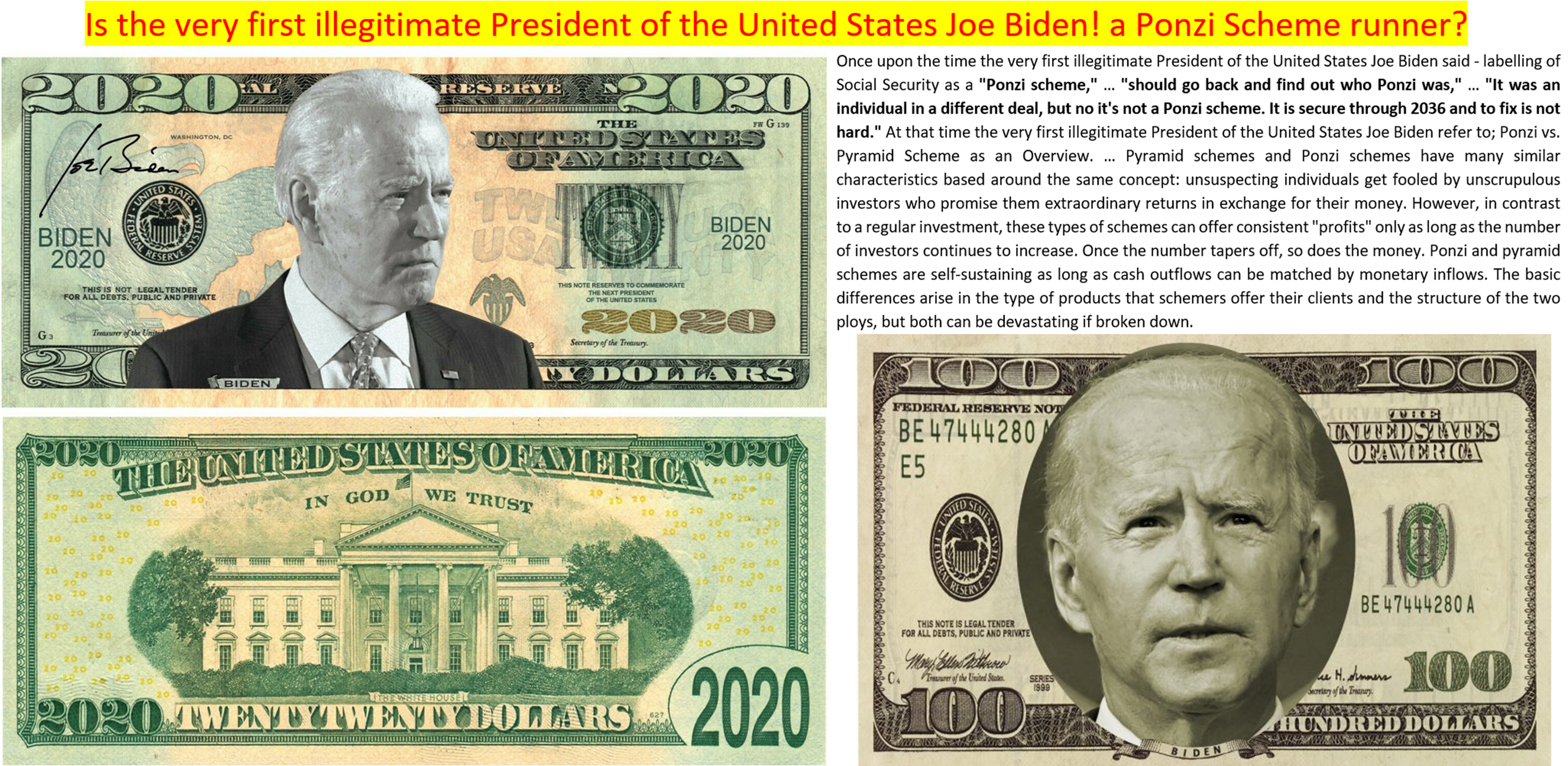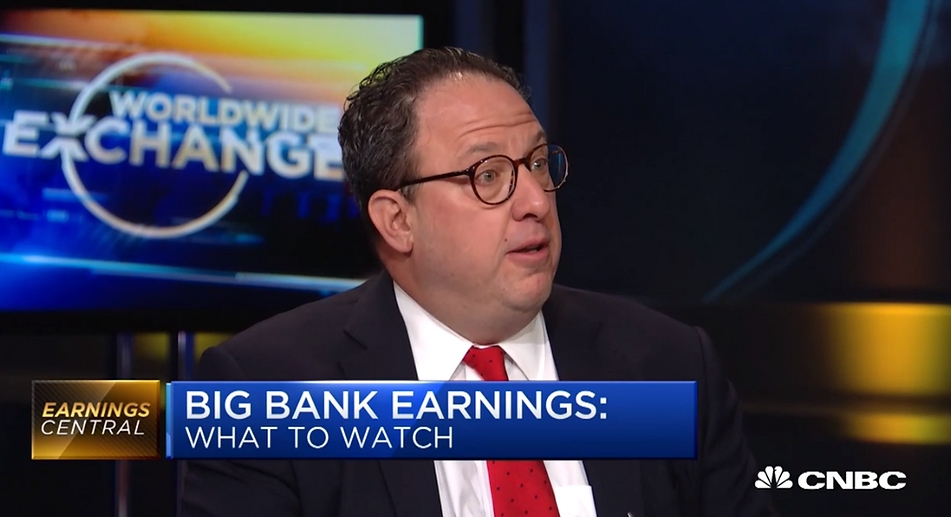Is the very first illegitimate President of the United States Joe Biden! a Ponzi Scheme runner?

U.S. President Joe Biden on
Monday November the 22 2021 nominated Jerome Powell for a second term as Fed
chair, and named Fed Governor Lael Brainard, the other top candidate for the
job, as vice chair.
The U.S. dollar traded near
its highest in over a year to the euro and close to a five-year peak against the
yen as a hawkish tilt by Federal Reserve policymakers, buoyed by solid U.S.
data, contrasted with more dovish monetary outlooks in Europe and Japan. "The
U.S. economy retained its titanium status," while "slightly hawkish comments
from the normally dovish Daly" also helped to lift the dollar, Tapas Strickland,
a director of economics at National Australia Bank, wrote in a research note.
Fed policymakers unanimously decided at last month's meeting to begin reducing
the central bank's $120 billion in monthly purchases of Treasuries and
mortgage-backed securities, a program introduced in early 2020 to help nurse the
economy through the COVID-19 pandemic. A number outright favored a faster taper
of the bond-buying program during those deliberations. At the meeting, the FOMC
decided to leave interest rates near zero and begin scaling back the pace of
purchases in the $120-billion-per-month bond-buying program it launched last
year, with an eye toward completing the process by mid-2022. A growing number of
Federal Reserve policymakers indicated they would be open to speeding up the
elimination of their bond-buying program if high inflation held and move more
quickly to raise interest rates, minutes of the U.S. central bank's last policy
meeting showed. The durability and broadening in price pressures has taken the
White House and the central bank by surprise and prompted both to respond. U.S.
President Joe Biden and Fed Chair Jerome Powell stressed earlier this week that
they would take steps to tackle the rising costs of everyday items, including
food, gasoline and rent. "Various participants noted that the (policy-setting)
Committee should be prepared to adjust the pace of asset purchases and raise the
target range for the federal funds rate sooner than participants currently
anticipated if inflation continued to run higher than levels consistent with the
Committee's objectives," the Fed said in the minutes. The committee said it
would trim its Treasury bond purchases by $10 billion and its mortgage-backed
bond purchases by $5 billion, starting this month. Some Federal Reserve
policymakers were in favor of a faster pace of bond tapering to provide the
central bank with plenty of room to hike rates amid concerns about inflation
What’s pops into my nimble
brain is; … This briefing just above, derive from a form of imagination
imprinted to politician reality perception rather then it be the genuine
reality;
As the image to the right
reflects Pandora’s Box … as all Liquidity Primary Dealers has to operate the
Government Bond based securities, where the red printing reflects negative funds
as Government Sovereign default in Trillion, each of you be able to realize that
we are in closed box of Treasury Securities operation and the fund, either can
expand or shrink in that specific boundary financial wallet. This wallet cover
four basic treasury securities contracts as;
The principal value of TIPS
rises as inflation rises. Inflation is the pace at which prices increase
throughout the U.S. economy, as measured by the Consumer Price Index (CPI).
Floating-rate notes (FRNs)
make up a significant component of the U.S. investment-grade bond
market.
A coupon bond, also referred
to as a bearer bond or bond coupon, is a debt obligation with coupons attached
that represent semiannual interest payments.
 A Treasury Bill (T-Bill) is
a short-term U.S. government debt obligation backed by the Treasury Department
with a maturity of one year or less.
A Treasury Bill (T-Bill) is
a short-term U.S. government debt obligation backed by the Treasury Department
with a maturity of one year or less.
Due to the image on the left,
Federal Reserve is able to manipulate the financial market on expectation or
rather imagination as a form of dreams then the genuine reality, that the US
Economy reflected by GDP be able to regain the ground within the time before the
year 2022 when the $120 billion monthly bond purchases shall end. However, as
the simple
 The different between the
Ponzi Scheme and current Treasury Securities manipulation is that the participants
as Primary Dealers are aware of this situation. Ponzi schemes are based on
fraudulent investment management services—basically, investors contribute money
to the "portfolio manager" who promises them a high return, and then when those
investors want their money back, they are paid out with the incoming funds
contributed by later investors. The person organizing this type of fraud is in
charge of controlling the entire operation; they merely transfer funds from one
client to another and forgo any real investment activities. A pyramid scheme, on
the other hand, is structured so that the initial schemer must recruit other
investors who will continue to recruit other investors, and those investors will
then continue to recruit additional investors, and so on. Sometimes there will
be an incentive that is presented as an investment opportunity, such as the
right to sell a particular product. Each investor pays the person who recruited
them for the chance to sell this item. The recipient must share the proceeds
with those at the higher levels of the pyramid structure. A Ponzi scheme is a
fraudulent investing scam promising high rates of return with little risk to
investors. A Ponzi scheme is a fraudulent investing scam which generates returns
for earlier investors with money taken from later investors. This is similar to
a pyramid scheme in that both are based on using new investors' funds to pay the
earlier backers. Both Ponzi schemes and pyramid schemes eventually bottom out
when the flood of new investors dries up and there isn't enough money to go
around. At that point, the schemes unravel.
The different between the
Ponzi Scheme and current Treasury Securities manipulation is that the participants
as Primary Dealers are aware of this situation. Ponzi schemes are based on
fraudulent investment management services—basically, investors contribute money
to the "portfolio manager" who promises them a high return, and then when those
investors want their money back, they are paid out with the incoming funds
contributed by later investors. The person organizing this type of fraud is in
charge of controlling the entire operation; they merely transfer funds from one
client to another and forgo any real investment activities. A pyramid scheme, on
the other hand, is structured so that the initial schemer must recruit other
investors who will continue to recruit other investors, and those investors will
then continue to recruit additional investors, and so on. Sometimes there will
be an incentive that is presented as an investment opportunity, such as the
right to sell a particular product. Each investor pays the person who recruited
them for the chance to sell this item. The recipient must share the proceeds
with those at the higher levels of the pyramid structure. A Ponzi scheme is a
fraudulent investing scam promising high rates of return with little risk to
investors. A Ponzi scheme is a fraudulent investing scam which generates returns
for earlier investors with money taken from later investors. This is similar to
a pyramid scheme in that both are based on using new investors' funds to pay the
earlier backers. Both Ponzi schemes and pyramid schemes eventually bottom out
when the flood of new investors dries up and there isn't enough money to go
around. At that point, the schemes unravel. “The banks never were there to catch
the falling knife but they certainly did act as a pretty huge liquidity buffer
to the marketplace in a way that they can’t or won’t today,” said Kevin
McPartland, head of market structure and technology research at Coalition
Greenwich. But to understand this expression we have to understand as What Is
the Liquidity Coverage Ratio (LCR)? What Is the Liquidity Coverage Ratio (LCR)?
… The liquidity coverage ratio (LCR) refers to the proportion of highly liquid
assets held by financial institutions, to ensure their ongoing ability to meet
short-term obligations. This ratio is essentially a generic stress test that
aims to anticipate market-wide shocks and make sure that financial institutions
possess suitable capital preservation, to ride out any short-term liquidity
disruptions, that may plague the market. The political fight over the US debt
spilled into the $22tn Treasury market for the first time on Friday October the
1 2021, as investors dumped short-term bills that mature around the time the US
could run out of cash.
“The banks never were there to catch
the falling knife but they certainly did act as a pretty huge liquidity buffer
to the marketplace in a way that they can’t or won’t today,” said Kevin
McPartland, head of market structure and technology research at Coalition
Greenwich. But to understand this expression we have to understand as What Is
the Liquidity Coverage Ratio (LCR)? What Is the Liquidity Coverage Ratio (LCR)?
… The liquidity coverage ratio (LCR) refers to the proportion of highly liquid
assets held by financial institutions, to ensure their ongoing ability to meet
short-term obligations. This ratio is essentially a generic stress test that
aims to anticipate market-wide shocks and make sure that financial institutions
possess suitable capital preservation, to ride out any short-term liquidity
disruptions, that may plague the market. The political fight over the US debt
spilled into the $22tn Treasury market for the first time on Friday October the
1 2021, as investors dumped short-term bills that mature around the time the US
could run out of cash.
In conclusion; The Liquidity
are narrowing to 40% of what the Very First Illegitimate President of the United
States Joe Biden had on January the 20 of 2021. Primary dealers are Federal
Reserve approved broker-dealers, banks, or other financial institutions that
serve as the trading counterparties for the Fed’s open market operations and
have a key role in providing liquidity in the market for U.S. Treasury
securities. These assets were expanded this year to hedge funds and now in the
process to be expanded to cryptocurrency. But this does not change the fact that
the Pandora Box as treasure securities consume the liquidity for the time
existence in office of the Very First Illegitimate President of the United
States Joe Biden and his administration as well as Democrats controlled US
Congress.



